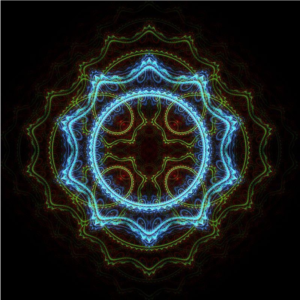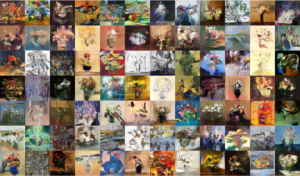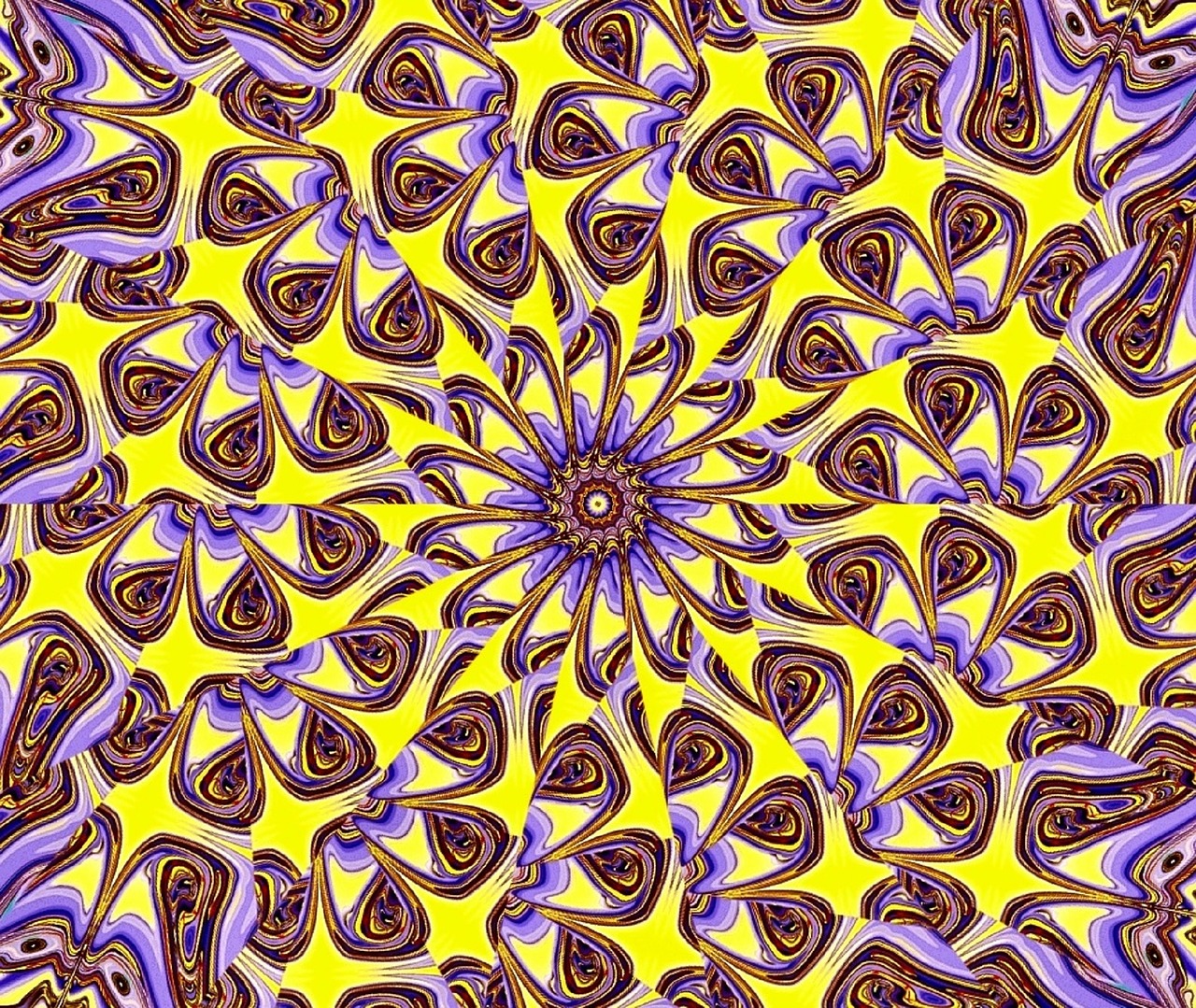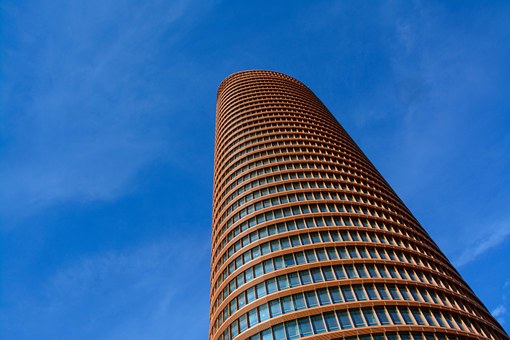Abstract
Algorithmic art is on the rise, and it’s expanding our conception of technology and art. Programmers are creating new programs to generate unique visual masterpieces that are beyond their own imaginations. With the use of evolutionary, mathematical, and artificial intelligence algorithms, programmers are bringing computers into the forefront of contemporary art.
Introduction
What do you associate with the word “art”? When it comes to visual art, what comes to mind might be traditional forms of creative expression such as painting, drawing, and crafting. As we move further into the digital age, computer animation and graphic design are becoming increasingly prominent as technology progresses and more artists take advantage of digital mediums to bring their artistic visions to life. On the surface, subjects such as math, programming, or engineering may not be the first to come to mind when we think of art, but what if the computer were to become an integral component, or even a contributing artist, to the work?
The Starting Line
Algorithmic art is a budding artform. Pioneered in the early 1960s alongside developments in computer technology, some of the first instrumental practices of algorithmic art were made possible by programmable plotter machines [1]. A plotter is a type of printer that takes commands from a computer to create continuous line drawings. In order to use a plotter, the user must write an instructional program for the machine to execute, analogous to how more advanced computer programs are run today. Such rudimentary computers were regarded almost exclusively as tools for math, logic, and science, but researchers such as Georg Nees saw the potential to use these machines for more than just printing graphs and charts. Nees explained his first conception of algorithmic art,″There it was, the great temptation for me, for once not to represent something technical with this machine but rather something ‘useless’ – geometrical patterns.″ By utilizing plotters, programmers were able draw out intricate patterns with lines as an experimental form of creative expression [1]. With geometric algorithms, artists were able to create organized, irregular patterns that would’ve been tedious to calculate or replicate by hand. Thus, plotter prints introduced a unique art-style that could be achieved by those with more technical backgrounds and who would not otherwise have been regarded as artists in the traditional sense.


Figure 1. Perspectively-designed offset lithography graphics (from plotter drawings by Georg Nees) [2].
Today, algorithmic art refers to algorithmically determined or computer-generated artwork. At the heart of algorithmic art is the use of algorithms, or sets of rules given to a
system to execute, e.g. a procedural machine or computer program. Just as plotters were used to produce variations of lines, the system runs an algorithm to generate visual pieces with different shapes, positions, and colors through the use of computer graphics. Unlike other forms of contemporary digital art where artists rely on their proficiency with specific, tangible tools as a method of directly translating their creative ideas into reality, algorithmic art is created programmatically, generally requiring the artist to relinquish some degree of control to the program. Oftentimes, the system is set into motion with some level of autonomy – in this sense, the artwork becomes a collaboration between the artist and the computer.
Valuing Algorithms
The accessibility of advanced computers today gives many programmers the convenience of running a range of software as well as the ability to generate results quickly. Provided the resources and increased efficiency, artists are now capable of high levels of experimentation, laying the groundwork for an endless variety of results. For example, granted the ability to incorporate data from unpredictable data sets through the use of random number generators or organic factors such as noise, the artist may allow the program to introduce variability to the resulting image. When the overall system is a function of such erratic data, complex pieces that artists would not have imagined themselves are generated. A relationship forms between the human and machine where the artist accepts a position as both the creator of the system and a spectator for the art that the system produces. Celestino Soddu, a pioneer of generative art – a subset of algorithmic art that relies on autonomous systems – and design, acknowledges the results as, “tools that open new fields and enhance our understanding of creativity as an indissoluble synthesis between art and science” [3]. With algorithms at play, the computer not only acts as a medium in which programmers can pursue an artistic vision, but also a method of creation that pushes the bounds of their artistic styles and imagination.
Sub-Categories
Algorithms can be used to develop art in a variety of ways. Specific families of algorithms can be used to achieve different patterns of results in order to direct or derive features for an art piece. Pieces commonly include combinations of mathematically-derived attributes such as geometry (shapes), repetition, patterns, and symmetry, as well as natural elements. Genetic, fractal, and artificial intelligence algorithms are some ways that artists may generate complex elements.
Genetic/Evolutionary Art
A genetic algorithm is a method used to simulate evolutionary processes and is commonly used to advance a piece towards a desired outcome through multiple iterations. When applying a genetic algorithm, each iteration can be thought of as a new generation that yields its own unique results while building upon the former’s data. The artist sets the program up to dynamically develop the artwork through iterations, improving on the visual output in a way that emulates natural selection, hence genetic algorithm. This simulated progression, as in biological evolution, involves concepts such as genotype and phenotype, processes of expression, selection, and reproduction [4]. In biology lingo, an organism’s genotype is its gene set, while the phenotype refers to the observable characteristics. The artwork can be thought of as the phenotype, grown from the algorithm, which would be considered the genotype, or the underlying genetic code [5]. To identify any changes to the characteristics, an initial population is required – each iteration of the program includes some input data (e.g. original source images) to represent the starting state and a measure of “fitness.” Rules for fitness are deliberately defined by the artist to provide the program guidance for growth. Each generation, a survival game happens where less-fit data is removed, while the fitter data in the population “mate,” combining their traits to generate select data to restore the population for future iterations [4]. The artist may also choose to introduce mutations to create variance and ensure diversity. Generative artwork is an evolution of ideas – the artist only begins with a general concept and does not know what all the details will look like until the piece is completely finished, and the creative process is closely linked to random intuitive decisions [3].

Fractal Art
Fractal art is a form of algorithmic art that is inspired by mathematics and nature. A fractal, as coined by the mathematician Benoit, is described as “a rough or fragmented geometric shape that can be split into parts, each of which is (at least approximately) a reduced-size copy of the whole” [7].

Thanks to their recursive nature, fractal algorithms make it possible to generate harmonious patterns and structures containing balanced, intricate details using concise instructions. Although fractals are most widely known for generating magnificent geometrical patterns such as mandalas, they are also a practical method for visually simulating nature. A fractal is a pattern that can be found in nature at different scales, in living organisms and in environments – for example, within a tree, each set of branches is a copy of a structure that came before it [8]. This is a basic principle that is repeated in organic life forms throughout the natural world, and thus, the existence of fractal algorithms allow programmers to create computer graphics that replicate life. Ecologist and author Myke Johnson notes that fractals give us “the ability to create digital worlds that remind us of our own,” providing works of art that feel close to our own world [8].
AI and Art
More recently, artists have begun to utilize artificial intelligence (AI) to create unique works of art. Unlike the aforementioned algorithmic methods, AI programs do not closely follow a set of rules, but rather, they are created to autonomously learn or develop an aesthetic direction by analyzing data [9]. The programmer “trains” the AI program by providing an initial collection of input images. By utilizing Generative Adversarial Networks (GANs) to identify and mix stylistic elements gathered from the training images, original artwork can be made.

Conclusion
Algorithms are challenging the way people define art and creativity. In this article, you may have noticed that the terms “artist” and “programmer” are used interchangeably – algorithmic art is closing the gap between areas that have been traditionally considered to be distinctly left or right brain. The integration of technology and art will continue to impact both how art is created and what is aesthetically possible, paving the way for more technical art styles to be discovered by both artists and computers.
Further Reading
“Artificial Evolution for Computer Graphics” by Karl Sims: https://www.karlsims.com/papers/siggraph91.html
“What Algorithmic Art Can Teach Us About Artificial Intelligence” by James Vincent: https://www.theverge.com/2018/8/21/17761424/ai-algorithm-art-machine-vision-perception-tom-white-treachery-imagenet
“Hand-Knit Paintings Weave DNA into Algorithms” by Kevin Holmes: https://www.vice.com/en_us/article/qvdgbq/channing-hansen-hand-knit-paintings-dna-algorithms
References
[1] Daudrich, A. (2016). Algorithmic Art and Its Art-Historical Relationships. Journal of Science and Technology of the Arts, 8(1), pp.37-39.
[2] Nees, G. (1970). Hall (Corridor), Sphere in a Sphere. [offset lithography].
[3] Soban-art.com. (2020). Generative Art Definition. [online] Available at: http://www.soban-art.com/definitions.asp.
[4] K. Sims, “Artificial Evolution For Computer Graphics,” ACM SIGGRAPH Computer Graphics, vol. 25, no. 4, pp. 319–328, Feb. 1991.
[5] Candy, L. and Edmonds, E. (2002). Explorations in Art and Technology. 2nd ed. Springer, pp.82-88.
[6] J. F. Miller, “Introduction to Evolutionary Computation and Genetic Programming,” Cartesian Genetic Programming Natural Computing Series, pp. 1–16, 2011.
[7] D. Shiffman and S. Fry, The Nature of Code. United States: D. Shiffman, 2012.
[8] K. Pearce, “Fractals In Nature: Develop Your Pattern Recognition Skills In The Forest,” DIY Genius, 20-Dec-2019. [Online]. Available: https://www.diygenius.com/fractals-in-nature/.
[9] “AI Is Blurring the Definition of Artist,” American Scientist, 14-Jun-2019. [Online]. Available: https://www.americanscientist.org/article/ai-is-blurring-the-definition-of-artist.
[10] K. Jones, “GANGogh: Creating Art with GANs,” Medium, 19-Jun-2017. [Online]. Available: https://towardsdatascience.com/gango7gh444-creating-art-with-gans-8d087d8f74a1.


